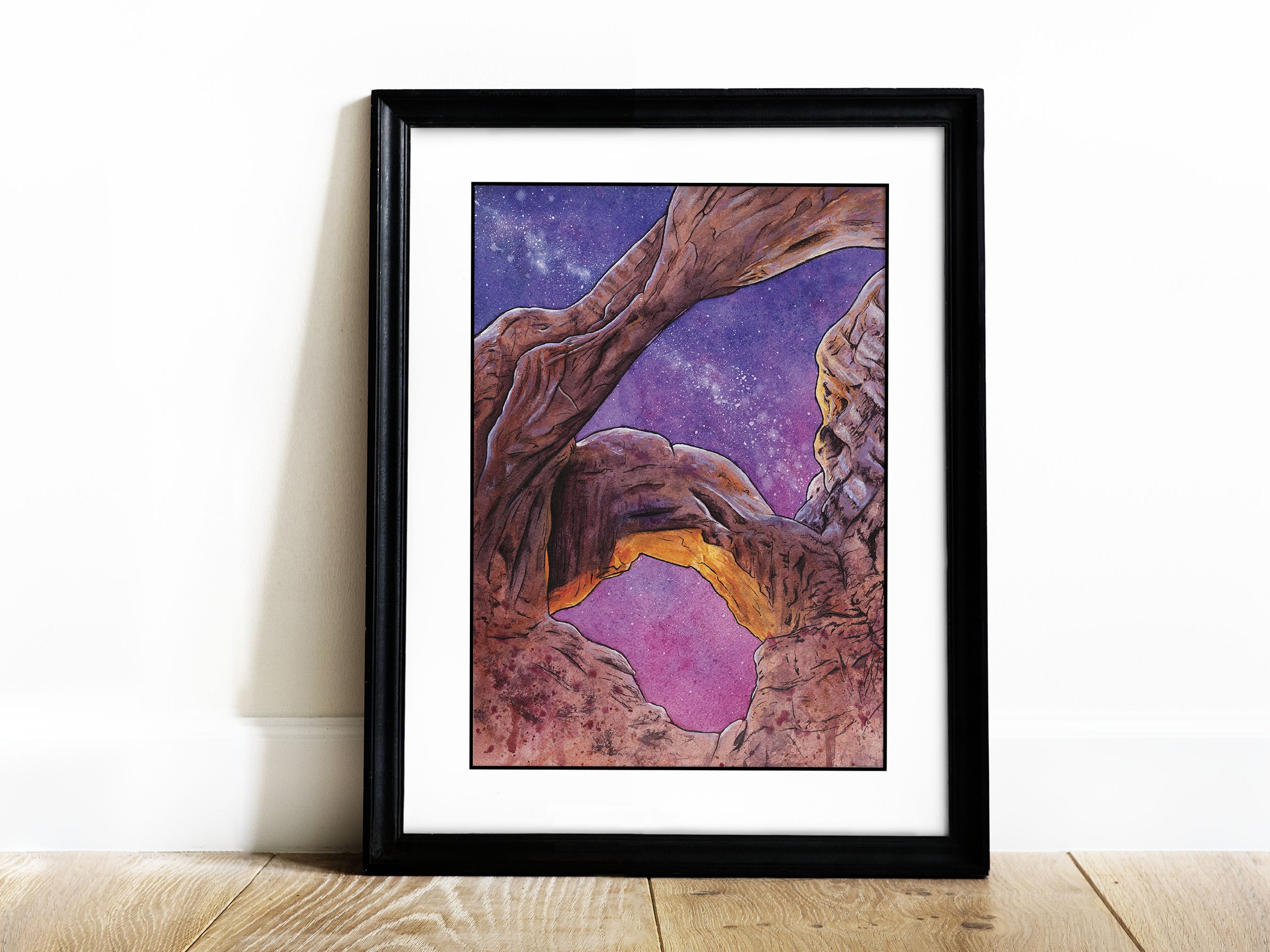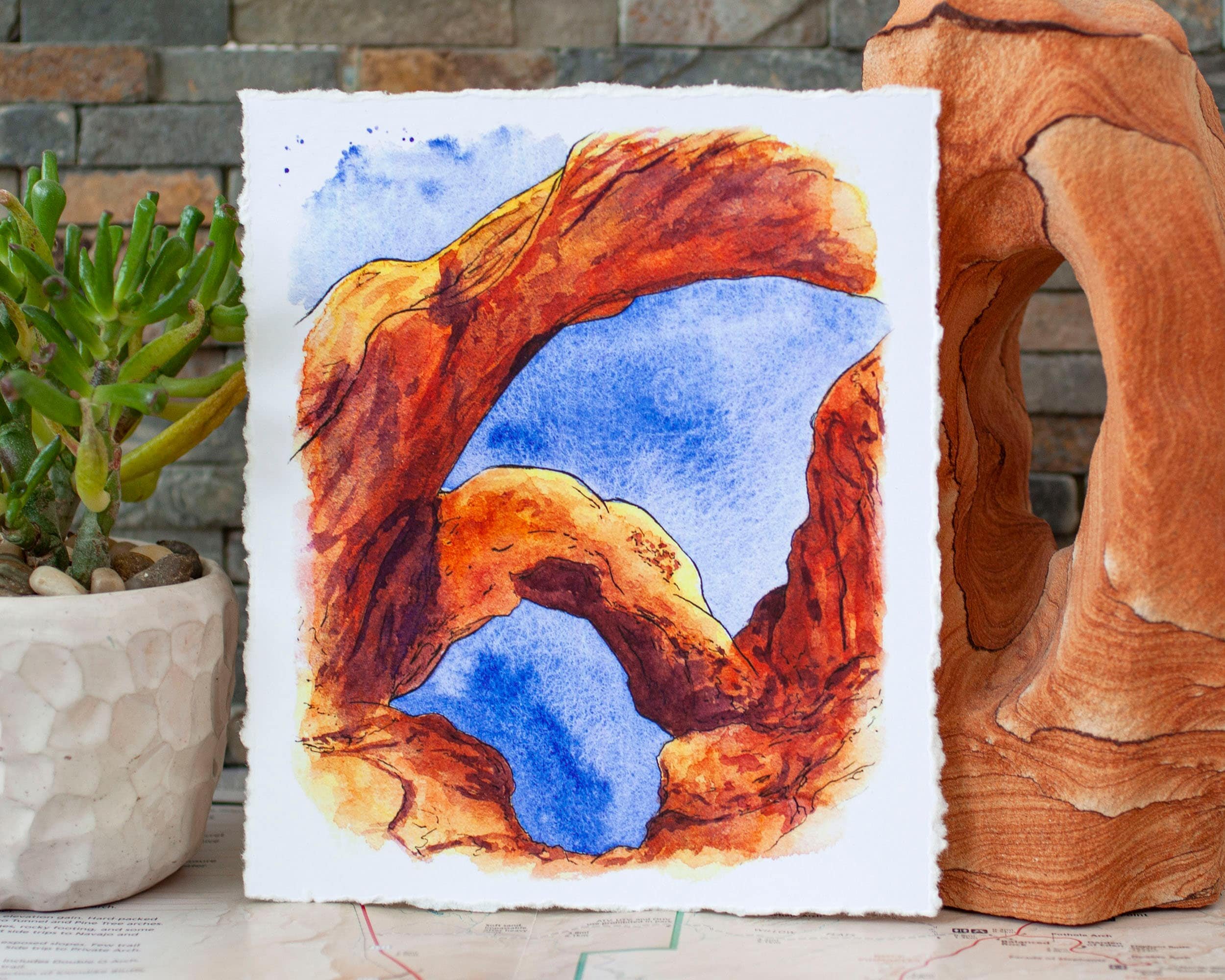 Image 1 of 4
Image 1 of 4

 Image 2 of 4
Image 2 of 4

 Image 3 of 4
Image 3 of 4

 Image 4 of 4
Image 4 of 4





Edible Mushrooms of the PACIFIC NORTHWEST Giclee Print
This poster features over 30 edible mushrooms of the Pacific Northwest. Each was hand illustrated by me and then arranged into this fun, educational poster.
The choice of what mushrooms to include and their correct (at the time of this writing) scientific name came forth with the help of various mushroom identification books, the good 'ole internet, and the Pacific Northwest Mycology Facebook group.
Mushrooms include American Blonde Morel (Morchella americana), Black Morel (Morchella brunnea), White Morel (Morchella rufobrunnea), Delicious Milky Cap (Lactarius deliciosus), Enoki (Flammulina velutipes), Shaggy Parasol (Chlorophyllum rhacodes), Lobster (Hypomyces lactifluorum), Common Ink Cap (Coprinopsis atramentaria), Shaggy Mane (Coprinus comatus), The Prince (Agaricus augustus), Dryad's Saddle (Cerioporus squamosus), Honey Mushroom (Armillaria mellea), Meadow Mushroom (Agaricus campestris), Western Matsutake (Tricholoma murrillianum), Witches Butter (Tremella mesenterica), Cat's Tongue (Pseudohydnum gelatinosum), Apricot Jelly (Guepinia helvelloides), Pacific Golden Chanterelle (Cantharellus formosus), Winter Chanterelle (Cantharellus tubaeformis), Black Trumpet (Craterellus calicornucopiodes), White King Bolete (Boletus barrowsii), King Bolete (Boletus rubriceps), Larch Bolete (Suillus grevillei), Wood Ear (Auricularia americana), Bear's Head Tooth (Hericium abietis), Blue Chanterelle (Polyozellus multiplex), White Chanterelle (Cantharellus subalbidus), Hedgehog (Hydnum repandum), Club Coral (Clavariadelphus truncatus), Stinkhorn (Phallus hadriani), Common Puffball (Lycoperdon perlatum), Chicken of the Woods (Laetiporus conifericola), Oyster Mushroom (Pleurotus ostreatus), and Western Cauliflower (Sparassis radicata).
This giclee print is created from over 30 original watercolor paintings scanned at a high resolution and printed on textured cotton rag paper with archival inks for the look and feel of watercolor paper! All prints will be signed in pencil on the bottom right corner (please reference last image).
Important Info:
- Colors may vary depending on each individual monitor and browser
- Frame not included
- I have recently learned that the Winter Chanterelle is not Cantharellus but was reclassified as Craterellus and will be doing a running change
Shipping:
- 18 x 24 sizes will be rolled, wrapped in glassine paper, and packaged in a tube
- 11 x 14 sizes will be wrapped in clear plastic sleeve with cardboard backing and mailed in a rigid mailer
*This poster is not meant for identification purposes, please do not rely on it to identify mushrooms you have foraged. You should only eat mushrooms that you are 100% certain of the identification. Always do your own research to determine which mushrooms you choose to consume.*
This poster features over 30 edible mushrooms of the Pacific Northwest. Each was hand illustrated by me and then arranged into this fun, educational poster.
The choice of what mushrooms to include and their correct (at the time of this writing) scientific name came forth with the help of various mushroom identification books, the good 'ole internet, and the Pacific Northwest Mycology Facebook group.
Mushrooms include American Blonde Morel (Morchella americana), Black Morel (Morchella brunnea), White Morel (Morchella rufobrunnea), Delicious Milky Cap (Lactarius deliciosus), Enoki (Flammulina velutipes), Shaggy Parasol (Chlorophyllum rhacodes), Lobster (Hypomyces lactifluorum), Common Ink Cap (Coprinopsis atramentaria), Shaggy Mane (Coprinus comatus), The Prince (Agaricus augustus), Dryad's Saddle (Cerioporus squamosus), Honey Mushroom (Armillaria mellea), Meadow Mushroom (Agaricus campestris), Western Matsutake (Tricholoma murrillianum), Witches Butter (Tremella mesenterica), Cat's Tongue (Pseudohydnum gelatinosum), Apricot Jelly (Guepinia helvelloides), Pacific Golden Chanterelle (Cantharellus formosus), Winter Chanterelle (Cantharellus tubaeformis), Black Trumpet (Craterellus calicornucopiodes), White King Bolete (Boletus barrowsii), King Bolete (Boletus rubriceps), Larch Bolete (Suillus grevillei), Wood Ear (Auricularia americana), Bear's Head Tooth (Hericium abietis), Blue Chanterelle (Polyozellus multiplex), White Chanterelle (Cantharellus subalbidus), Hedgehog (Hydnum repandum), Club Coral (Clavariadelphus truncatus), Stinkhorn (Phallus hadriani), Common Puffball (Lycoperdon perlatum), Chicken of the Woods (Laetiporus conifericola), Oyster Mushroom (Pleurotus ostreatus), and Western Cauliflower (Sparassis radicata).
This giclee print is created from over 30 original watercolor paintings scanned at a high resolution and printed on textured cotton rag paper with archival inks for the look and feel of watercolor paper! All prints will be signed in pencil on the bottom right corner (please reference last image).
Important Info:
- Colors may vary depending on each individual monitor and browser
- Frame not included
- I have recently learned that the Winter Chanterelle is not Cantharellus but was reclassified as Craterellus and will be doing a running change
Shipping:
- 18 x 24 sizes will be rolled, wrapped in glassine paper, and packaged in a tube
- 11 x 14 sizes will be wrapped in clear plastic sleeve with cardboard backing and mailed in a rigid mailer
*This poster is not meant for identification purposes, please do not rely on it to identify mushrooms you have foraged. You should only eat mushrooms that you are 100% certain of the identification. Always do your own research to determine which mushrooms you choose to consume.*
This poster features over 30 edible mushrooms of the Pacific Northwest. Each was hand illustrated by me and then arranged into this fun, educational poster.
The choice of what mushrooms to include and their correct (at the time of this writing) scientific name came forth with the help of various mushroom identification books, the good 'ole internet, and the Pacific Northwest Mycology Facebook group.
Mushrooms include American Blonde Morel (Morchella americana), Black Morel (Morchella brunnea), White Morel (Morchella rufobrunnea), Delicious Milky Cap (Lactarius deliciosus), Enoki (Flammulina velutipes), Shaggy Parasol (Chlorophyllum rhacodes), Lobster (Hypomyces lactifluorum), Common Ink Cap (Coprinopsis atramentaria), Shaggy Mane (Coprinus comatus), The Prince (Agaricus augustus), Dryad's Saddle (Cerioporus squamosus), Honey Mushroom (Armillaria mellea), Meadow Mushroom (Agaricus campestris), Western Matsutake (Tricholoma murrillianum), Witches Butter (Tremella mesenterica), Cat's Tongue (Pseudohydnum gelatinosum), Apricot Jelly (Guepinia helvelloides), Pacific Golden Chanterelle (Cantharellus formosus), Winter Chanterelle (Cantharellus tubaeformis), Black Trumpet (Craterellus calicornucopiodes), White King Bolete (Boletus barrowsii), King Bolete (Boletus rubriceps), Larch Bolete (Suillus grevillei), Wood Ear (Auricularia americana), Bear's Head Tooth (Hericium abietis), Blue Chanterelle (Polyozellus multiplex), White Chanterelle (Cantharellus subalbidus), Hedgehog (Hydnum repandum), Club Coral (Clavariadelphus truncatus), Stinkhorn (Phallus hadriani), Common Puffball (Lycoperdon perlatum), Chicken of the Woods (Laetiporus conifericola), Oyster Mushroom (Pleurotus ostreatus), and Western Cauliflower (Sparassis radicata).
This giclee print is created from over 30 original watercolor paintings scanned at a high resolution and printed on textured cotton rag paper with archival inks for the look and feel of watercolor paper! All prints will be signed in pencil on the bottom right corner (please reference last image).
Important Info:
- Colors may vary depending on each individual monitor and browser
- Frame not included
- I have recently learned that the Winter Chanterelle is not Cantharellus but was reclassified as Craterellus and will be doing a running change
Shipping:
- 18 x 24 sizes will be rolled, wrapped in glassine paper, and packaged in a tube
- 11 x 14 sizes will be wrapped in clear plastic sleeve with cardboard backing and mailed in a rigid mailer
*This poster is not meant for identification purposes, please do not rely on it to identify mushrooms you have foraged. You should only eat mushrooms that you are 100% certain of the identification. Always do your own research to determine which mushrooms you choose to consume.*







